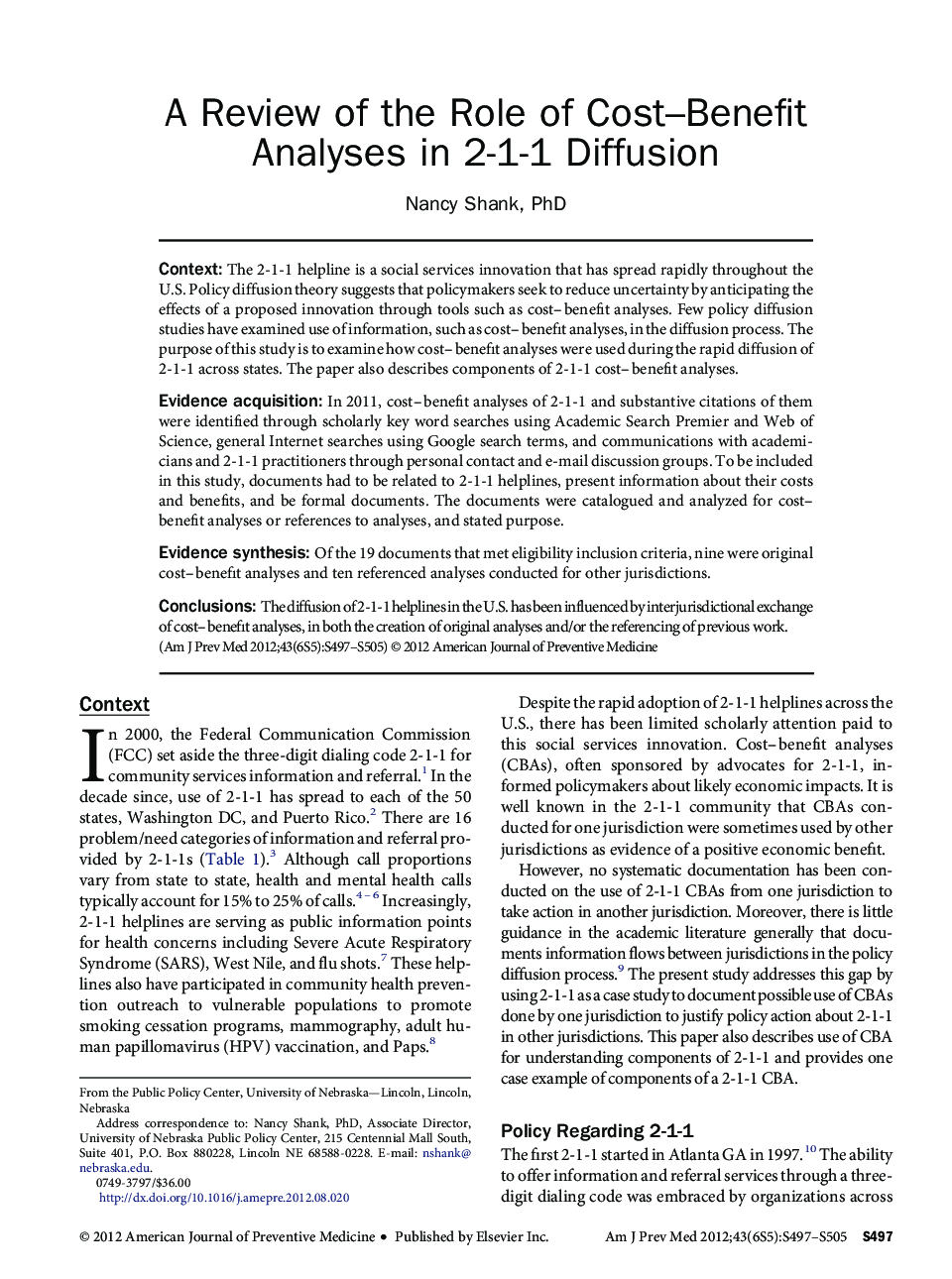| Article ID | Journal | Published Year | Pages | File Type |
|---|---|---|---|---|
| 4192830 | American Journal of Preventive Medicine | 2012 | 9 Pages |
ContextThe 2-1-1 helpline is a social services innovation that has spread rapidly throughout the U.S. Policy diffusion theory suggests that policymakers seek to reduce uncertainty by anticipating the effects of a proposed innovation through tools such as cost–benefit analyses. Few policy diffusion studies have examined use of information, such as cost–benefit analyses, in the diffusion process. The purpose of this study is to examine how cost–benefit analyses were used during the rapid diffusion of 2-1-1 across states. The paper also describes components of 2-1-1 cost–benefit analyses.Evidence acquisitionIn 2011, cost–benefit analyses of 2-1-1 and substantive citations of them were identified through scholarly key word searches using Academic Search Premier and Web of Science, general Internet searches using Google search terms, and communications with academicians and 2-1-1 practitioners through personal contact and e-mail discussion groups. To be included in this study, documents had to be related to 2-1-1 helplines, present information about their costs and benefits, and be formal documents. The documents were catalogued and analyzed for cost–benefit analyses or references to analyses, and stated purpose.Evidence synthesisOf the 19 documents that met eligibility inclusion criteria, nine were original cost–benefit analyses and ten referenced analyses conducted for other jurisdictions.ConclusionsThe diffusion of 2-1-1 helplines in the U.S. has been influenced by interjurisdictional exchange of cost–benefit analyses, in both the creation of original analyses and/or the referencing of previous work.
